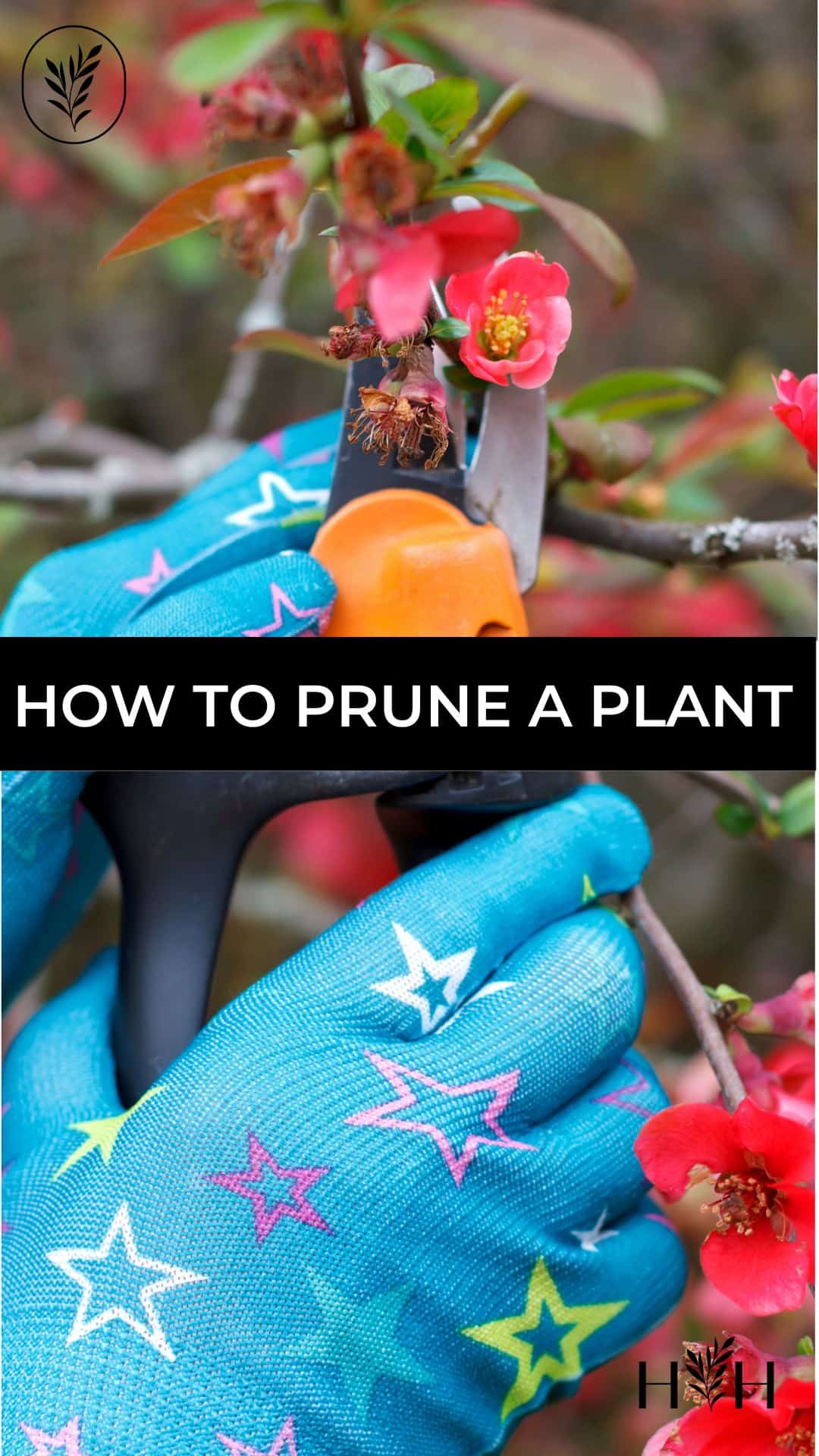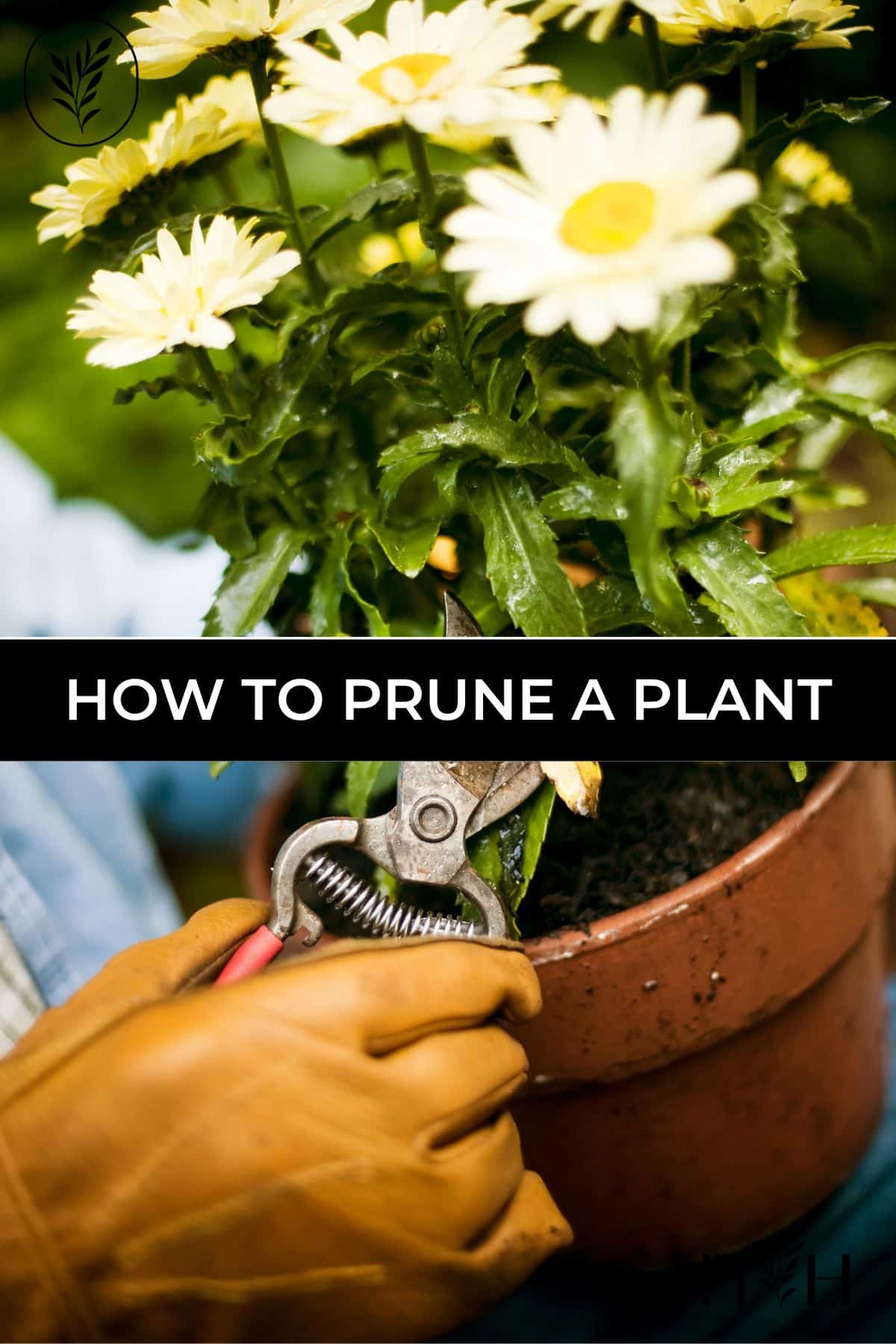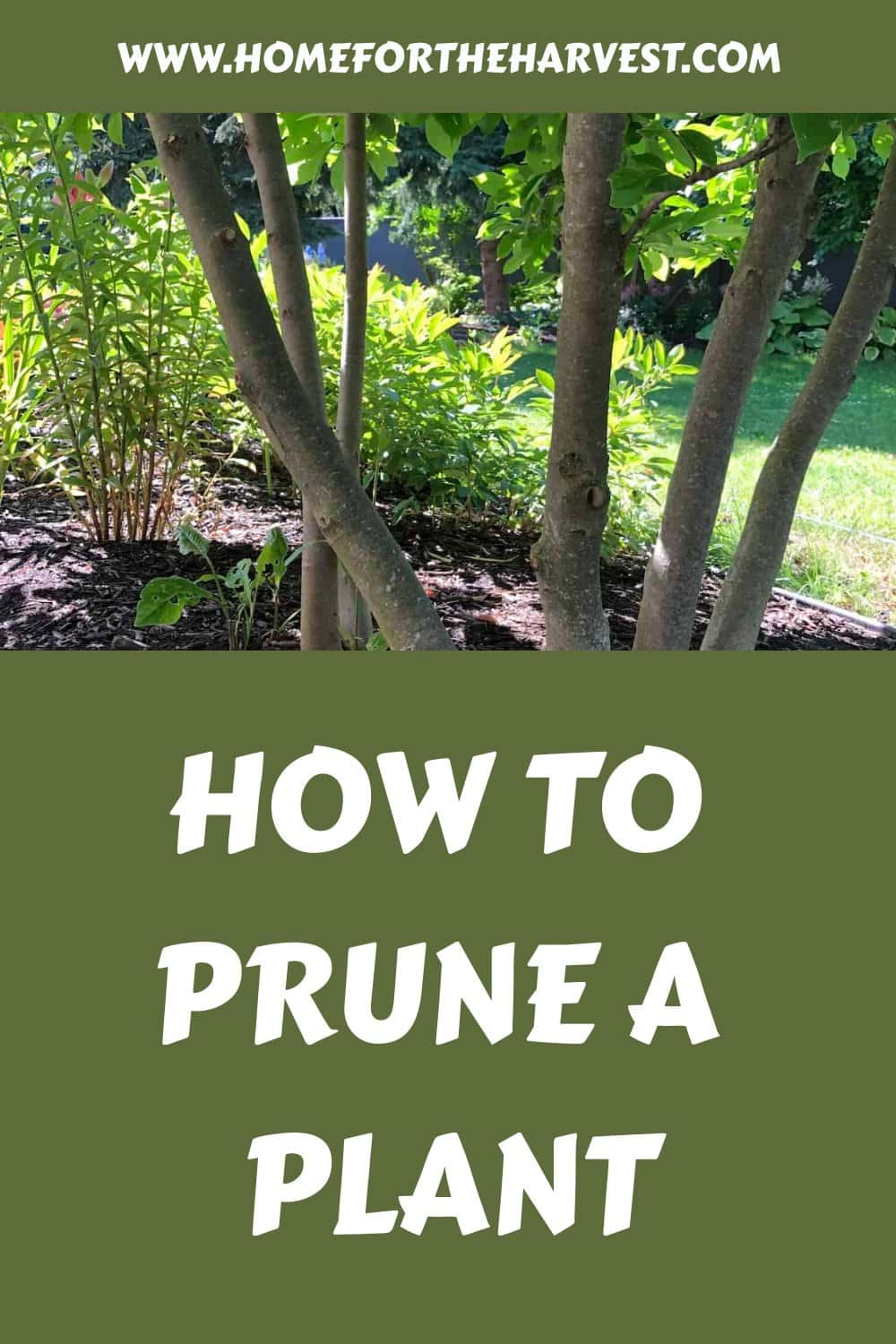For the health of your plants, you often need to prune them; but how do you do it? This detailed beginner’s guide shows you how to prune a plant.
Pruning may seem intimidating for the novice gardener or houseplant enthusiast, but it doesn’t have to be! Pruning can be just as relaxing and straightforward as watering your plants; plus, they’ll love you for it.
With this in mind, read on for my comprehensive guide on how to prune a plant!
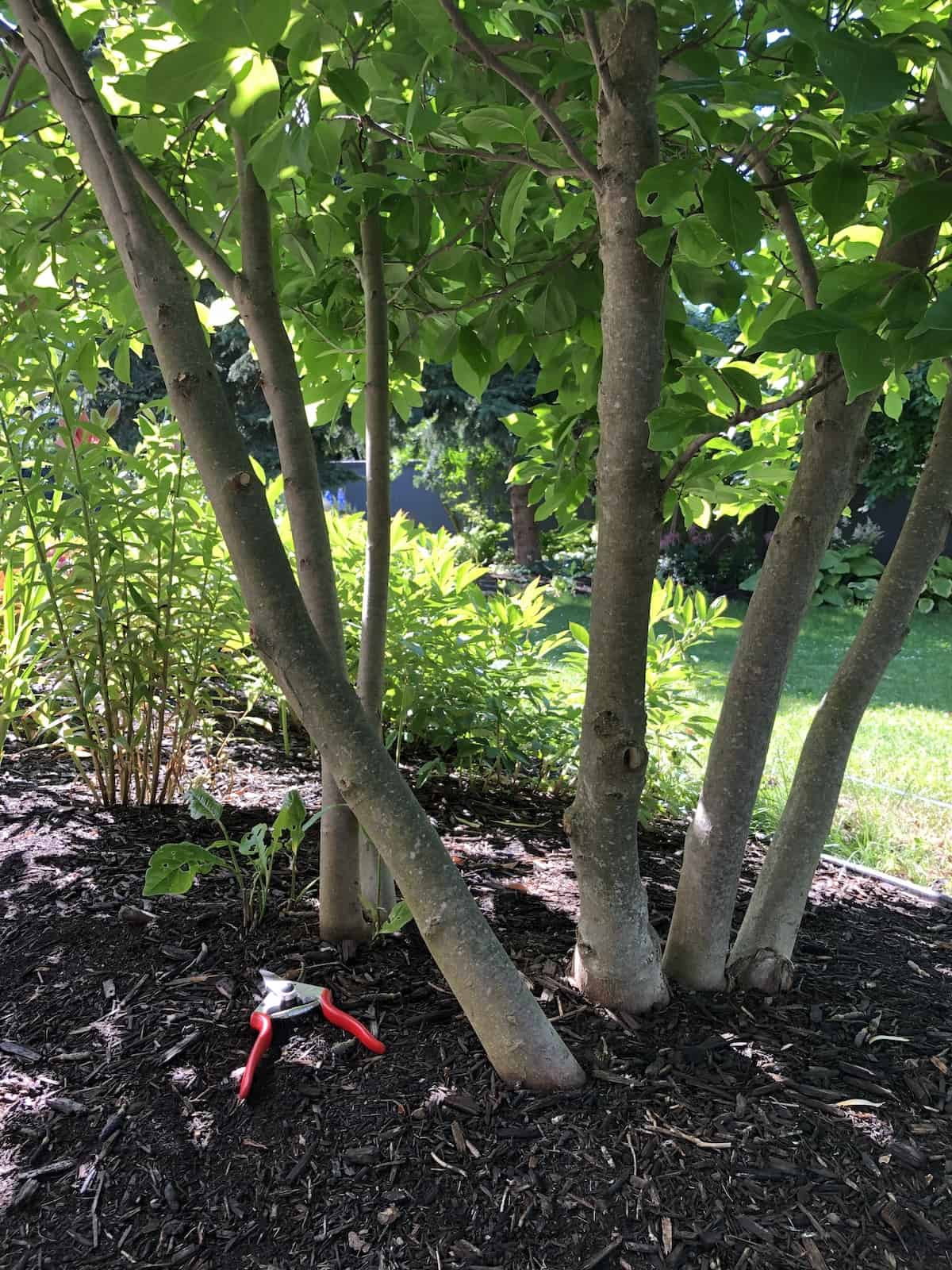
What is pruning?
Is your houseplant or fruit tree not growing the way you’d like? Does it look a little worse for wear but no amount of watering or sunlight seems to help? It may be time to prune your plant.
You can think of pruning simply as another word for “trimming,” but it’s a far more purposeful process that focuses on the plant’s health and not simply the way it looks. Pruning is necessary for all kinds of trees, flowers, shrubs, and other plants, both indoors and outdoors.
“The purpose of pruning is to influence the way plants grow, to improve their growth and therefore their shape and flower and fruit production.”
Pruning & Training (Royal Horticultural Society), by Geoff Hodge
Although this may sound daunting, remember that not all plants need to be pruned frequently or regularly. Some thrive with only a slight trim once a year–some can grow fine without pruning at all. Others will need regular pruning in order to grow to their utmost potential.
Reasons for pruning a plant
Here are some common reasons for pruning a plant:
- to remove dead, diseased, dying, and damaged growth
- to remove growth that may pose a risk to the plant’s health
- to remove unwanted growth or growth outside the desired perimeter
- to increase air circulation and sunlight penetration
- to improve flowering and fruiting
- to create a desired shape
(…often in that order!)
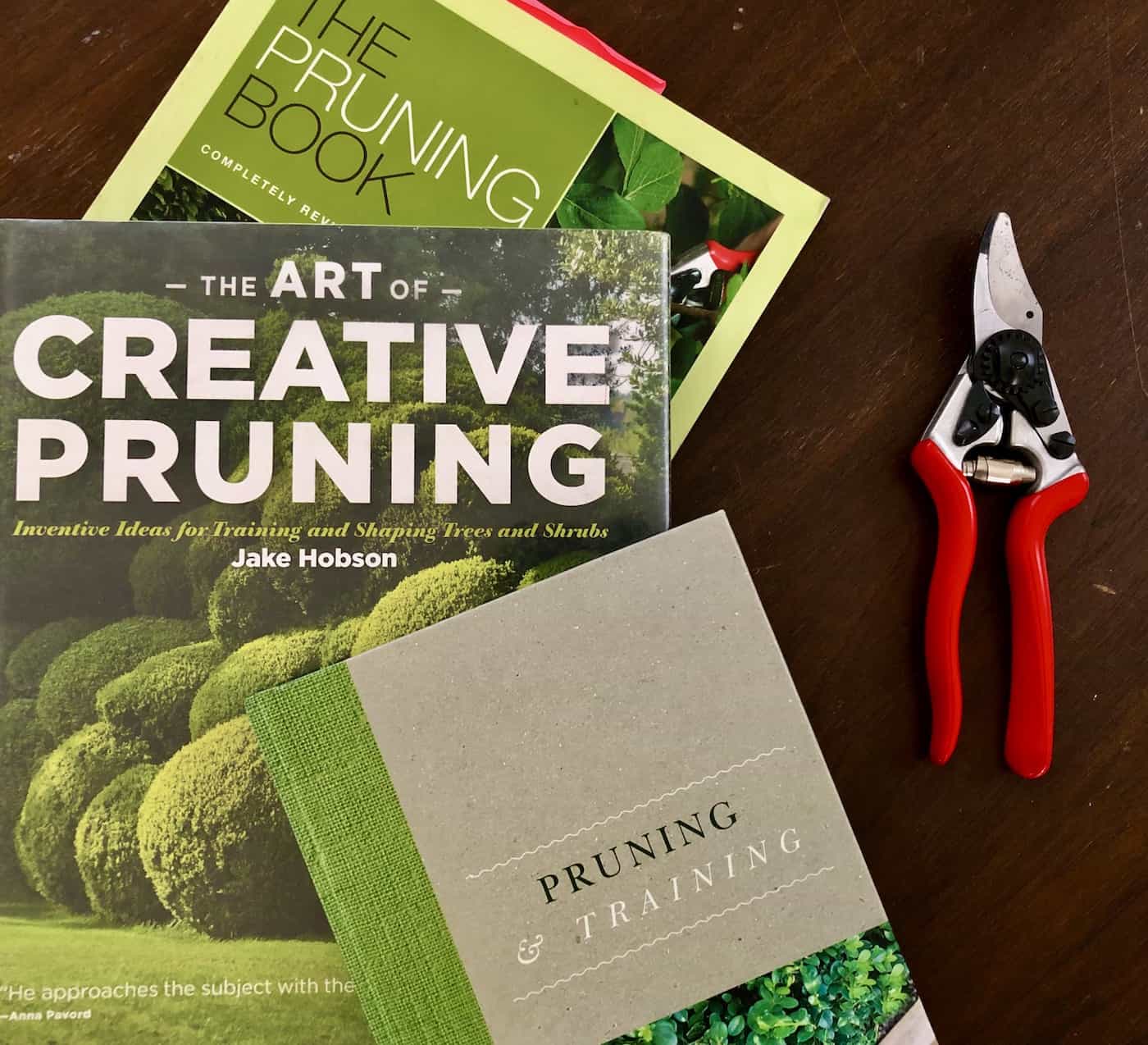
What tools do you need?
In order to get started pruning, you need to have the right tools. Using scissors or a blade that’s too dull for your plants can end up crushing stems and injuring them, leading to dieback. Here are some of the most common tools you’ll need depending on the plant:
Pruning shears
Hand-held pruning shears, also called secateurs, are vital for backyard pruning. These are the best for small plants or projects where you need less power and more precision. If you’re mostly interested in learning how to prune indoor plants, this is the main tool you’ll need. Bypass secateurs are the most popular and all-around useful type.
Loppers
Loppers have wider mouths and longer handles than handheld pruning shears. You choose these if you need more power over precision, and they’re perfect for thicker branches. Loppers come with different-sized handles and blades, so choose the size that works best for your project. For instance, loppers with long handles and small blades are a great choice for trimming hard-to-reach dead branches and twigs of your fruit tree.
Pruning saw
A pruning saw can be very helpful in removing old, woody stems from shrubs, right at their base. These saws have rough serrated teeth that can slowly tear through thicker woody stems. Larger branches are generally pruned by a certified arborist using other professional tools such as a bow saw, pole pruner, or chainsaw.
Hedge shears
Hedge shears are great for trimming short hedges and bushes. You can get motorized hedge trimmers, but shears tend to be better suited to the residential landscape. They function as giant scissors and can be used to shear the sides and tops of hedges and topiary.
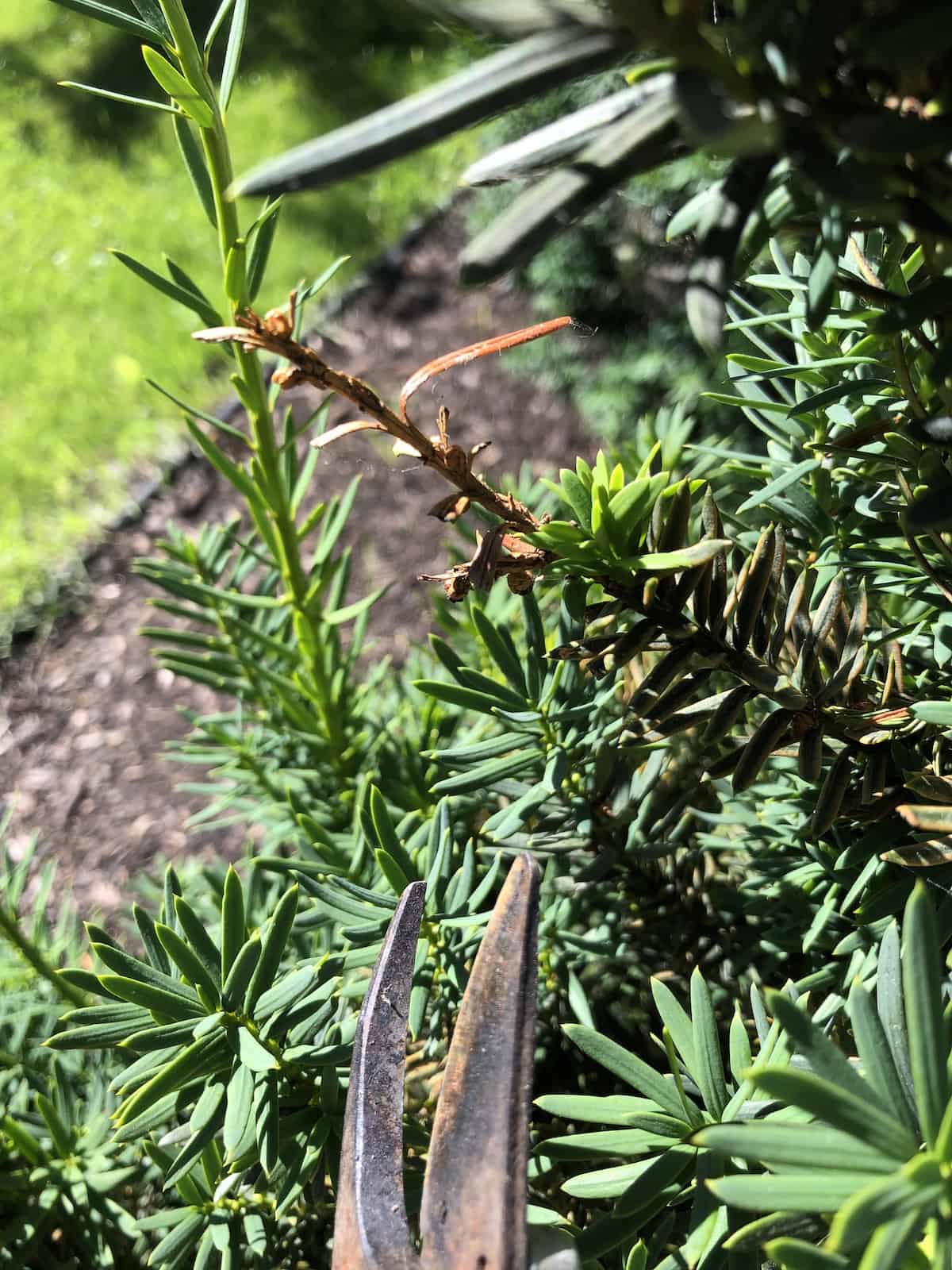
Pruning plants – Different types
Before pruning, it is absolutely key to learn about the type of plant that needs to be pruned. Is it a tree or a shrub? A herbaceous perennial? Is it an evergreen plant or does it lose its leaves every fall? How big does it get at maturity (and what shape does it generally grow in)? There are exceptions to every rule (especially in pruning), so learn about the individual species prior to pruning.
“Some plants need very little pruning, while others require annual pruning to ensure a good display. Overgrown plants, which have never been pruned or have been pruned badly, may need sever pruning to restore them to their former glory.”
Pruning & Training (Royal Horticultural Society), by Geoff Hodge
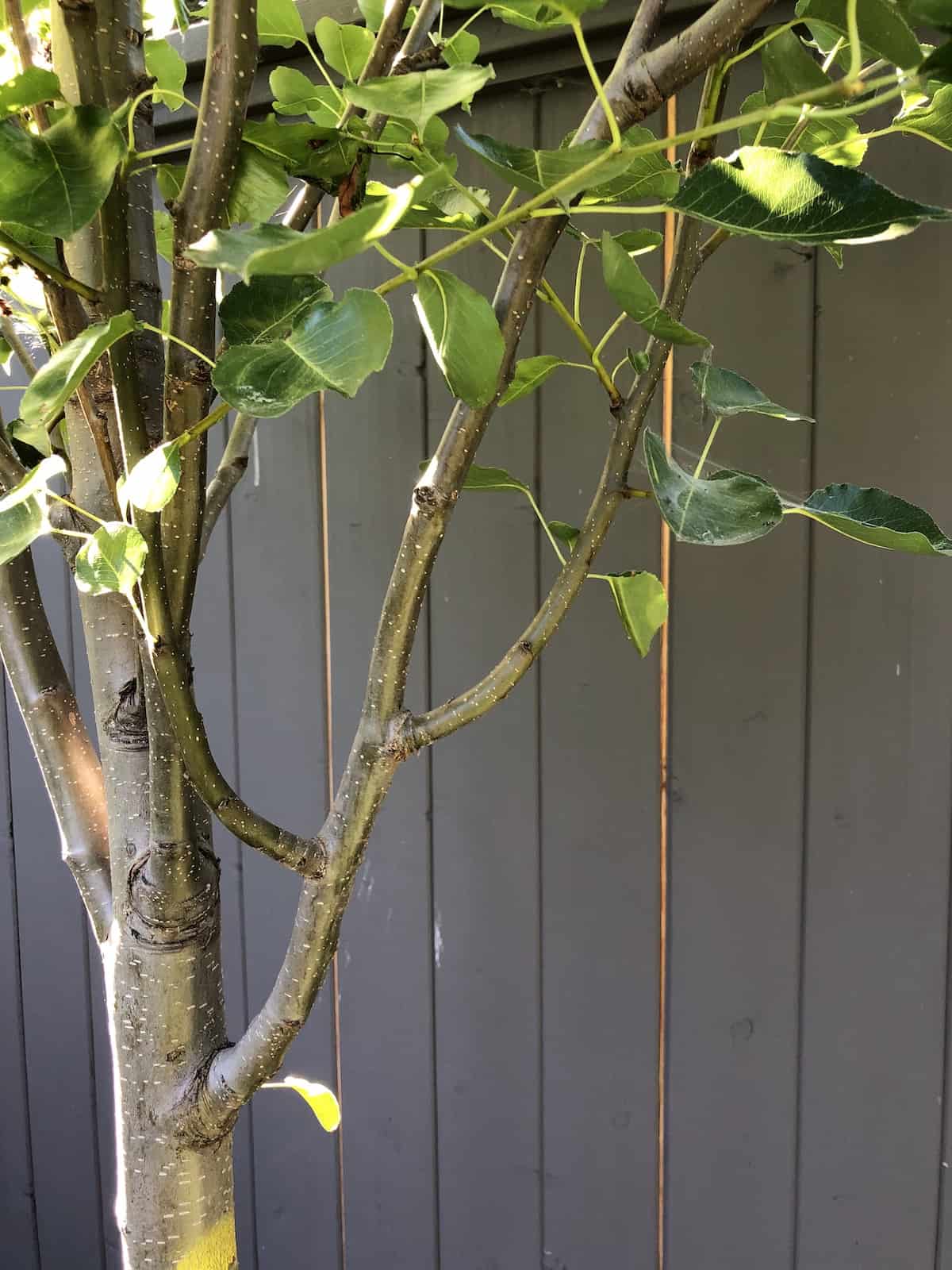
Pruning trees
Trees are common plants to learn how to prune. Big trees with heavy branches are best left to professional arborists to prune. Smaller trees and insignificant maintenance pruning can sometimes be done by competent homeowners.
Each tree species has a general shape that it naturally grows into. It is key to know and understand the genetic form of the particular tree you’re growing before pruning. Some trees also have a preferred time of year for pruning.
Many trees develop a “central leader” – a single vertical branch in the middle of the tree (think of where the star might go on a Christmas tree). There are also trees that create a round puffball (like a cloud-like cartoon tree). There are even trees with branches that go straight up (“fastigiate”) or hang down (“weeping”). Know the type and make a plan before pruning!
“Once established, many trees require little or no further pruning, apart form removing dead, dying, damaged, diseased, or unwanted growth that spoils the tree’s overall shape and appearance.”
Pruning & Training (Royal Horticultural Society), by Geoff Hodge
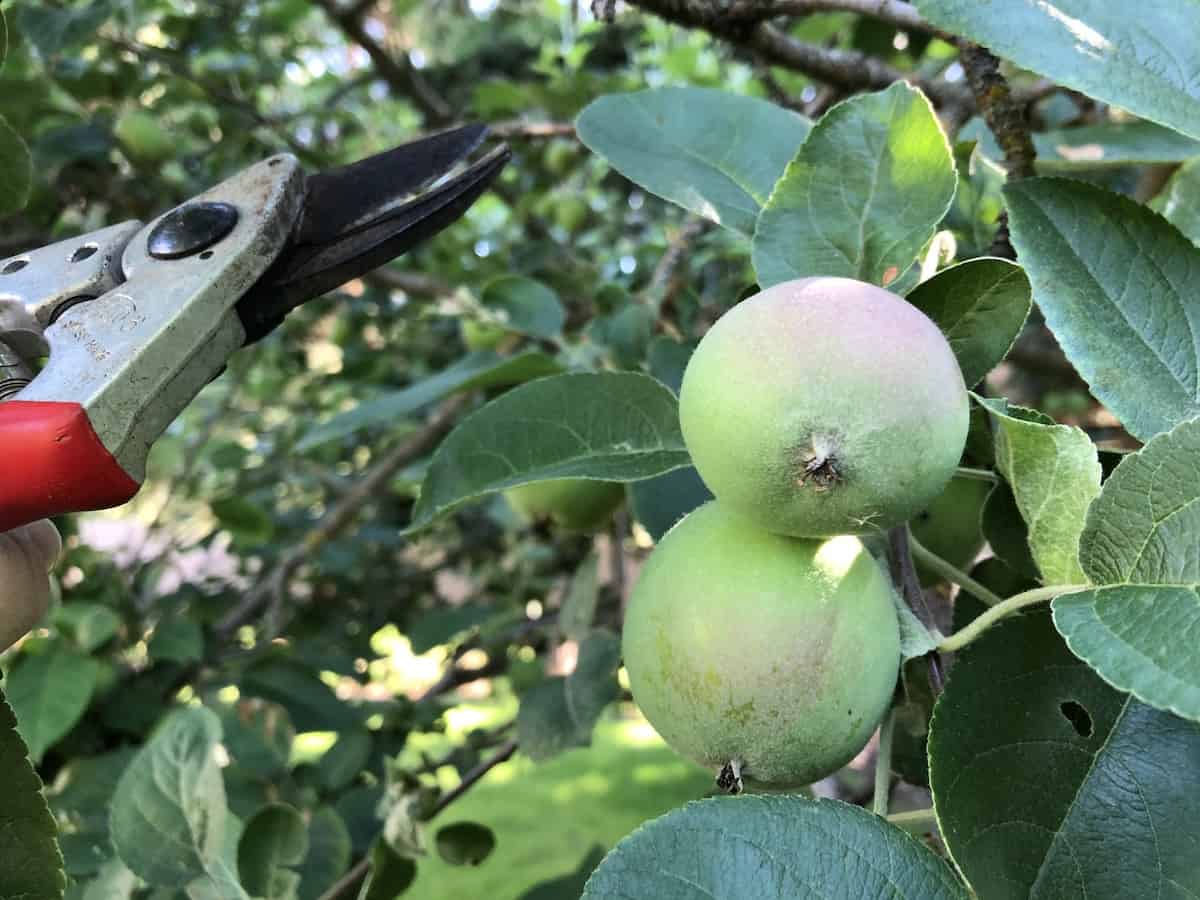
Pruning fruit trees
Fruit trees will need to be pruned frequently and carefully if you want to increase the yield of fruit the tree grows. Pruning them also helps them open up their canopies to let in ample light and air. It also helps them develop thick stems and branches that are capable of holding heavy fruit.
However, once you train them and have the low-growing branches you’ll need, your fruit tree won’t need much annual pruning after about the first three years.
During early spring while the tree is dormant, you’ll want to cut away:
- Shoots growing from the ground originating from the root,
- Branches that are competing with the single central leader,
- Branches that are growing inward or crossing others,
- Branches that are rubbing against the trunk of the tree,
- Unwanted growth (suckers, water shoots, et cetera).
It’s important that your cuts are clean and at a slight angle. Since you may be dealing with larger branches (even on dwarf trees), you’ll often want to use loppers for this project.
Further Reading: When to Fertilize Fruit Trees
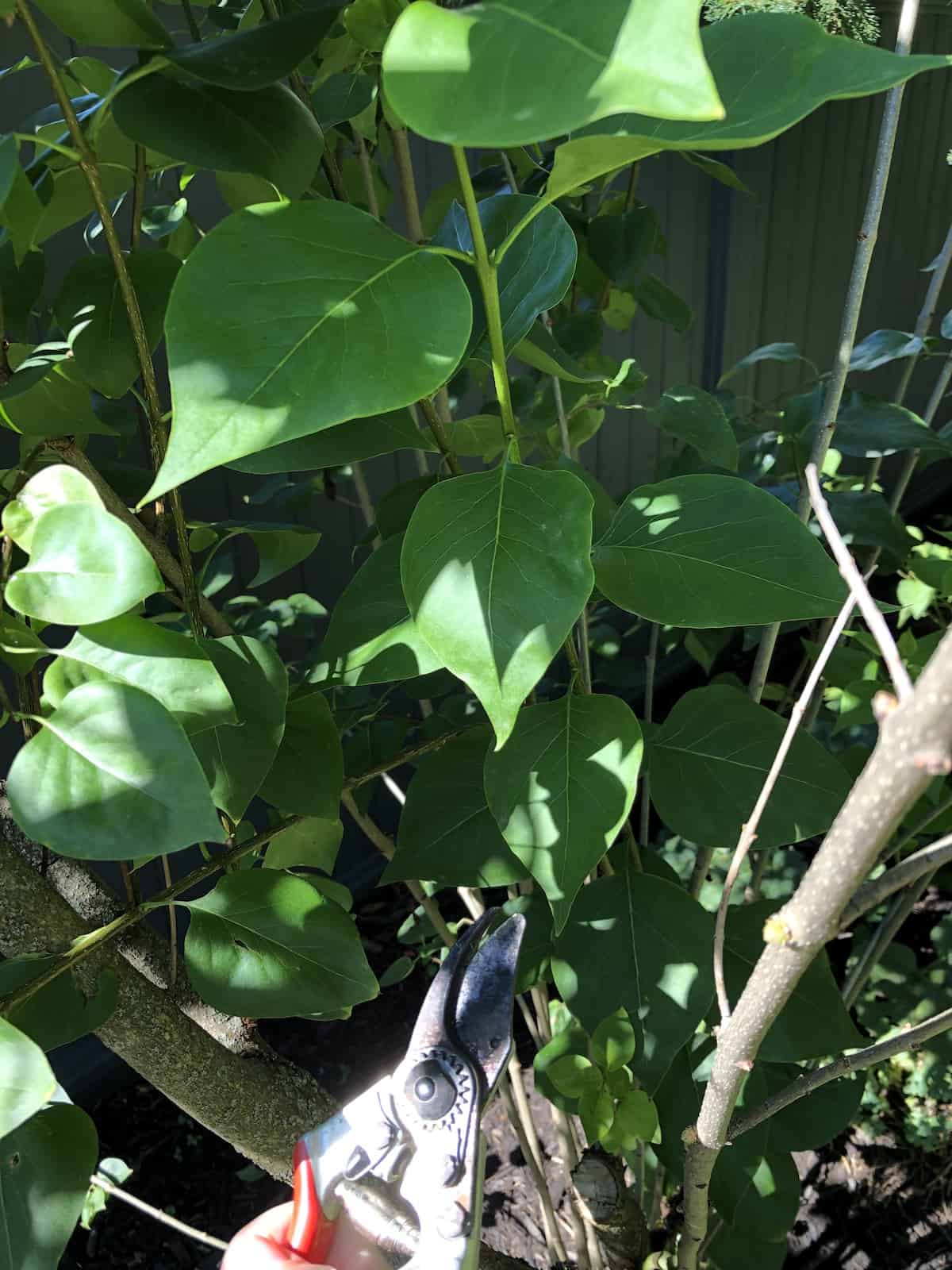
Pruning shrubs
Some shrubs grow perfectly fine with little to no pruning, while other types grow best with heavy pruning. One common theme is to remove a few branches of the oldest, woodiest growth each year. These stems eventually stop growing too many leaves. Opening up the center of the shrub can increase airflow (a good thing).
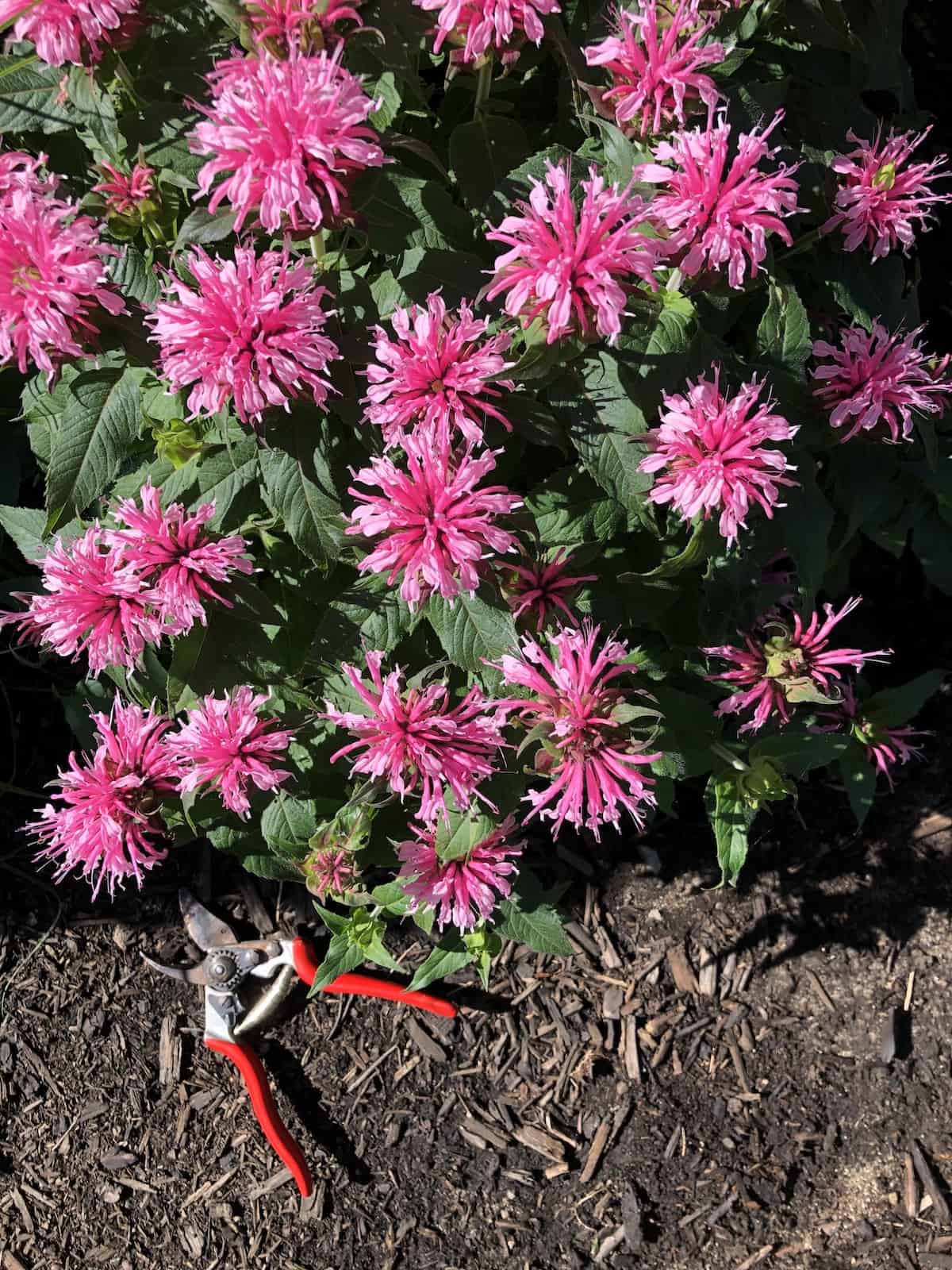
Pruning perennials
Non-woody perennials in your garden are probably the most labor-intensive plants to learn how to prune. This is because of the sheer number and variety in a typical garden bed as well as the importance of keeping them pruned for ample growth and an orderly appearance.
During the fall and early spring, it’s important that you cut away dead branches to the source. While the plants are growing, you’ll also want to cut off spent flowers (“deadheading”), as this encourages them to bloom again. Perennials like delphinium, daylily, phlox, and dianthus tend to rebloom throughout the summer.
If you notice that your plant has a lot of yellowing, older leaves, you can aid your plant by removing about a fourth of the oldest leaves to the base of the plant. This helps the plant look new and fresh as well as opens it up for more light, air, and new growth.
Further Reading: Winterizing Perennial Plants
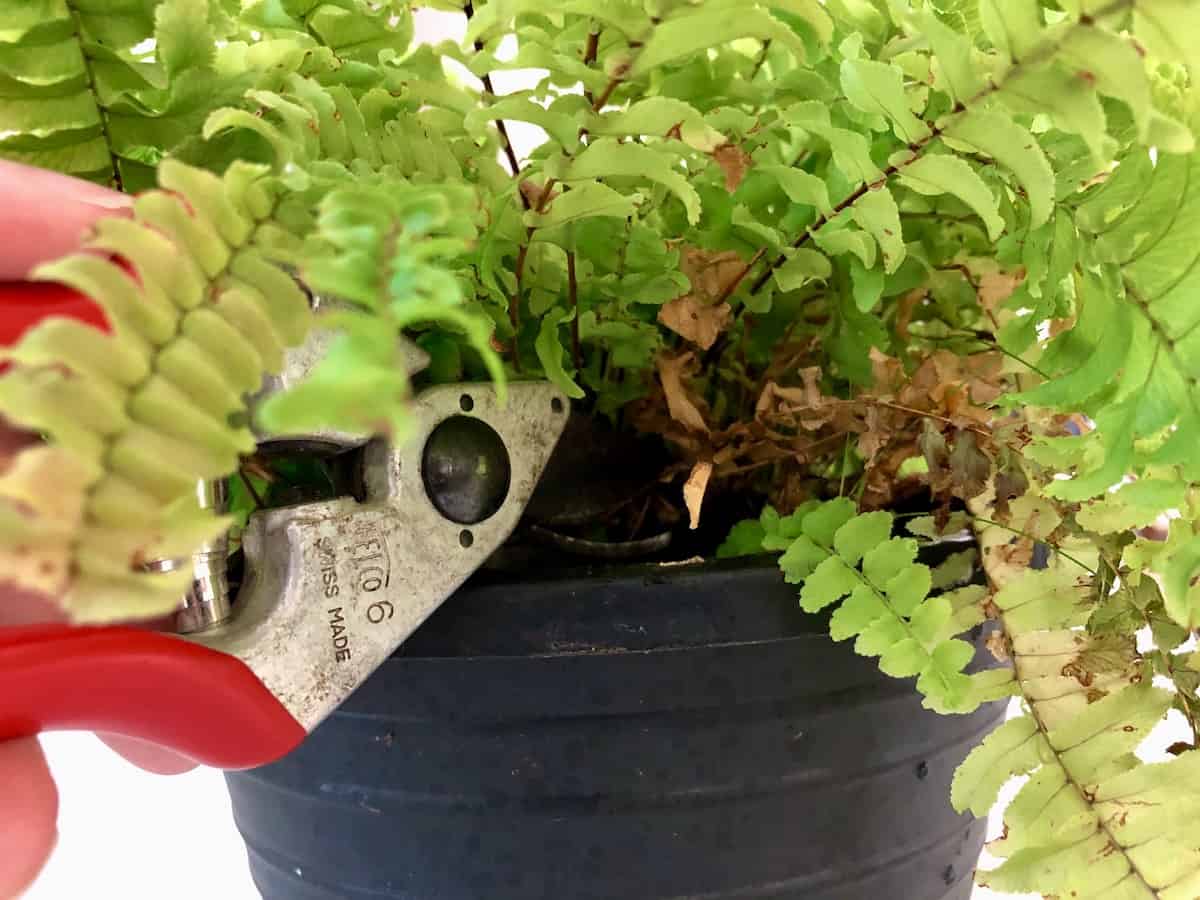
Pruning houseplants
You’ll want to prune indoor houseplants during late winter or early spring. For the majority of houseplants, this is usually the beginning of their growing seasons. For flowering houseplants, you’ll want to prune them after they’ve finished flowering in order to avoid accidentally pruning away new growth.
It’s important that you first observe your houseplants and check for any dying leaves or stems. You can also deadhead your flowering plants by clipping off the spent flowers as close to the main branch as possible. You’ll want to prune your houseplant just above a node so that you can encourage new growth where you prune.
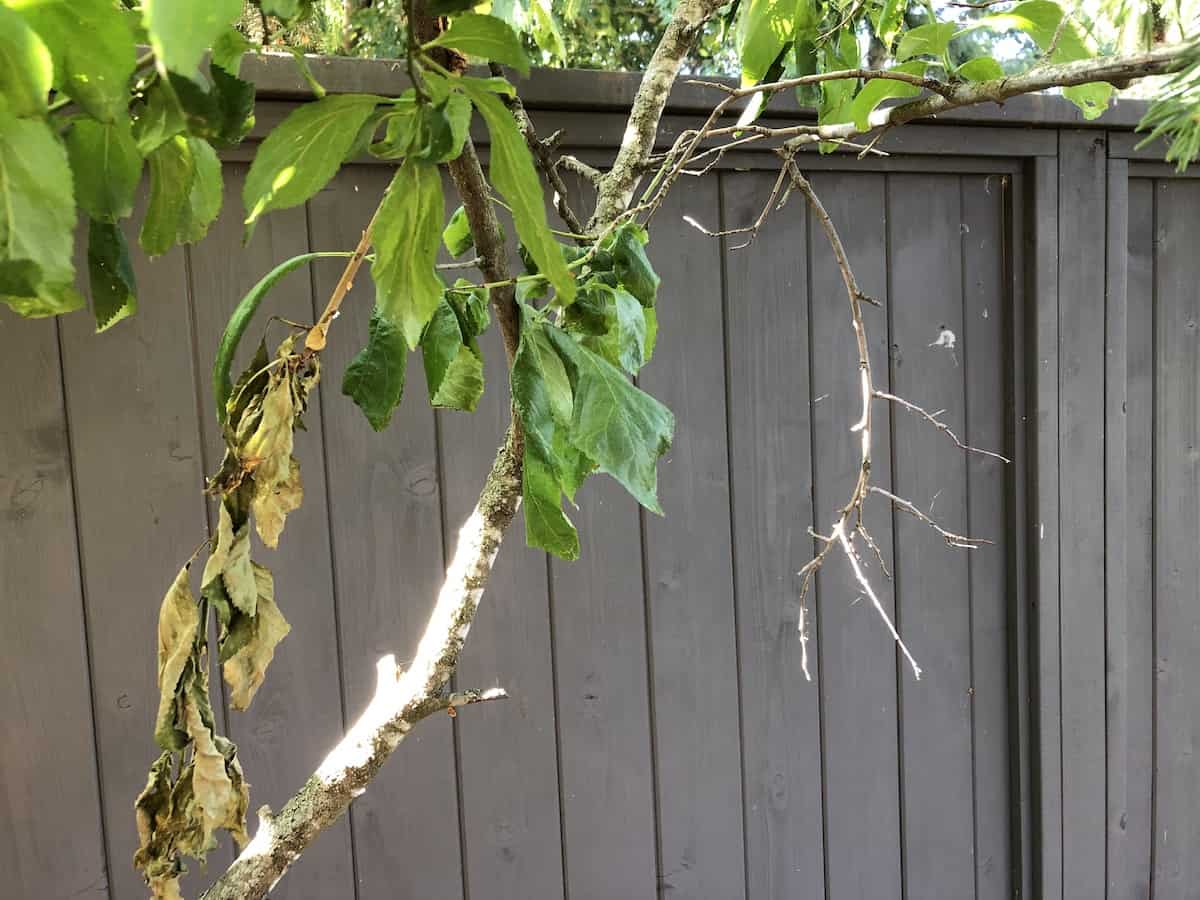
How to prune a plant: Taking your time
Knowing how to prune a plant is about becoming familiar with your plants and showing patience. With the majority of plants, pruning should only be done at a certain time of the year and only in certain places, such as above the node or right below a spent flower.
You’ll also want to be careful not to prune too much from your plant all at once, which can cause it to die. If you do the right amount of research and use caution, you don’t need to worry about whether pruning is hurting your plant–you’re actually giving it a hand!



